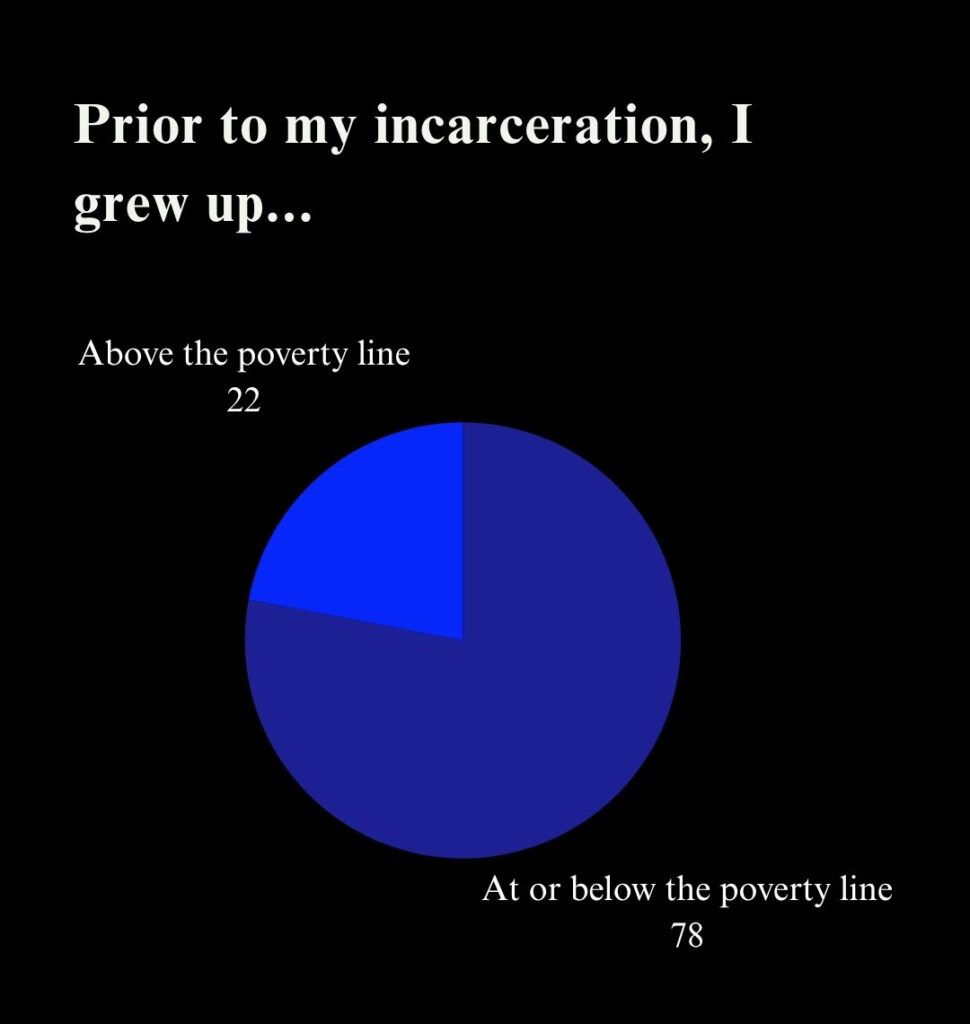
As lawmakers and working class people become aware of tough on crime campaigns, the term “mass incarceration” has been uttered by criminal justice reformers.
The question remains: does mass incarceration truly reflect the population numbers of the masses? For example, Latinos represent 46% of California’s incarcerated population and Blacks represent 28%, despite Blacks representing 6% of California’s overall population, according to the Prison Policy Initiative.
Researchers Wendy Sawyer and Peter Wagner’s report “Mass Incarceration, The Whole Pie” suggests that prison population numbers are more reflective of those living at or below the poverty line.
The report also showed that the criminal justice system penalizes poverty, starting with the cost of bail. The median felony bail bond amount is $10,000 equivalent of eight months’ income for someone who is arrested. As a result, people with low incomes are more likely to face the harms of pretrial detention.
Poverty is not only a forecast for imprisonment, it is also often the outcome, as a criminal record and time spent in prison destroys wealth, creates debt, and extinguishes certain job opportunities, stated the report.
San Quentin resident Lee Sanchez, 37, said he was raised by a single parent and grew up in a neighborhood where criminality was normalized.
“When was a kid, I saw my father work hard as a construction worker, but no matter how hard he worked, we were still dirt poor,” Sanchez said. “Dad ended up pivoting to a life of crime because he saw it as being more lucrative and a more coherent way to get us [siblings] out of poverty.”
According to Sanchez his father was eventually arrested and sent to prison. Sanchez followed his father’s footsteps directly to the front steps of prison, and trace his current incarceration back to his family’s poverty.
A questionnaire was circulated throughout the San Quentin community asking residents about their childhood financial status. The questionnaire revealed that 78 out of the 100 responses exhibited that residents lived at or below the poverty line, which was anyone with an income of less than $40,000 a year.
The complete removal of the California paper food stamps program occurred in 2004, switching to a debit card, according to California.gov. The questionnaire also revealed 81 out of 100 residents could name at least two colors of the different denominations of paper food stamp.
“Self-help groups are cool, they arm you with the tools to be able to exist in society,” said Charles George, 48, a SQ resident. “On the flip side, I feel like prison should offer more vocational skills that I can use to move directly into a field of employment.”
George said that he believed crime and imprisonment were a direct offspring of the desperation of unemployment and lack of opportunity.
“A good paying job is the only way to pull yourself out of poverty and out of the crosshairs of the justice system,” George said. “That trucking school [Concrete Rose Truck Driver Training Program] and Coding [The Last Mile’s website development program]… [there] should be a lot more programs that create a direct pipeline into an industry.”
A prior felony conviction reduces a person’s chance of entering into the middle class by 57%, while increasing the chance of reoffending or imprisonment by 61%, according to the study.
“For every dollar invested in a prison, the same should be invested in poor communities,” Sanchez said. “You don’t see people from nice neighborhoods in here [prison] with us, poverty is the tie that binds us all together.”